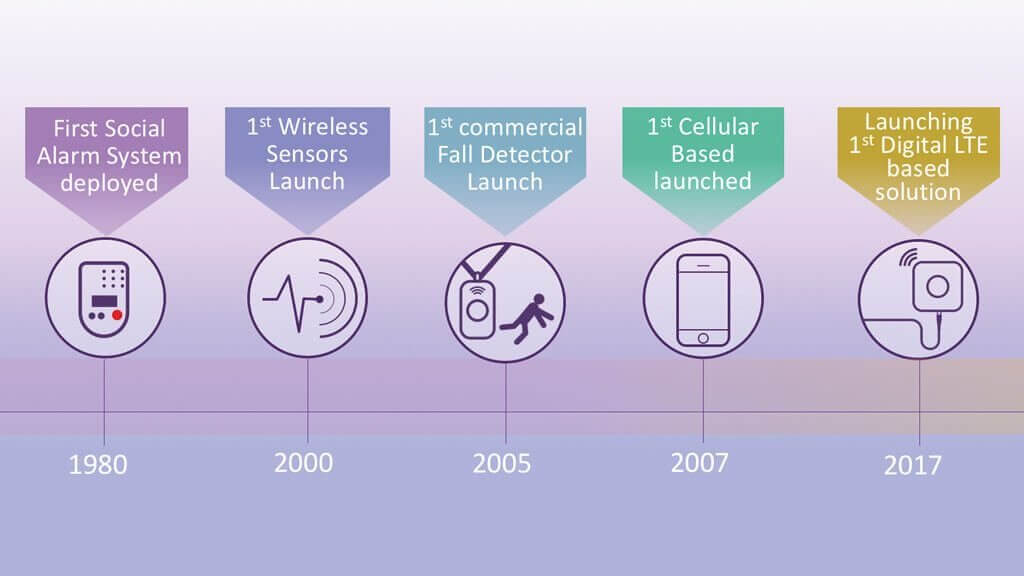
When an elderly or an ill person is home alone and they required emergency for any reason, effective communication with their monitoring center is crucial for their safety. For this reason Wilhelm Hormann invented the first Personal Emergency Response System (PERS) back in the 1970s, which went public in the early 1980s and won the Frankfurt Innovation Prize of the German Economy in 1982. In 1975, the American Telephone Company developed a similar system to Hormann’s, in which the user wore a pendant around the neck to be pushed in case of emergency and deliver an automatic message to several phone numbers.
The evolution of this emergency system has been relatively slow, not necessarily keeping up with the technology innovations that have been made during the ensuing years. There was also a constant weakness in all devices, active or passive, as Wikipedia says: “Both passive and active devices require that the user wear the device”. As we discussed on this blog not long ago, the PERS systems is moving from “all standard landline phone-based to cellular-based technology”, but apart from the connectivity with the emergency center, are there any significant advances in the PERS to increase the independence of PERS users and their loved ones? Fortunately the answer is finally in the positive. According to the AARP “As technology advances, the range of options has grown from the basic, wearable device with a button to call a response center in case of emergency. Now systems may include fall detection or prevention, in-home health and well-being monitors, fitness trackers, movement sensors and more.”
The levels of protection have increased along the decades from a system that was basically a panic button to the sophisticated alerting alarm platform that very few companies in the world are able to offer. Pursuing the purpose to combine fall detection, voice activation and on-the-go protection, the extra layer of care appears as the waited revolution to help the elderly when they most need it and provide peace of mind to their loved ones. This sophisticated platform is conceived as a complete senior protection at home and on-the-go system and it also includes LTE technology that makes possible for PERS to face the continuous reformulations that networks go through lately and are expected to for the upcoming years.
The power of PERS system combined with the artificial intelligence (AI) advances opens a new way to improve the eldercare and also seniors’ lifestyle. As Carevium says “an explosion of low-cost sensing technologies that can provide substantial capabilities to the elderly in their homes” is expected. A report by PriceWaterhouseCoopers explains that “The value propositions that underpin the fusion of IoT and AI include smart sensors (or intelligent sensors), which combine IoT and AI to provide realtime data and feedback”. It is already a reality that some of the most groundbreaking smart care platforms include a smart sensors system based capable of creating a pattern of movement and register it with safety purposes.
If the beginning of the PERS was basically a panic button and for years its evolution revolved around improving this device, we are now witnessing the biggest improvement since its origin. The PERS system is no longer an emergency system but a platform that can actively initiate the process of checking if everything is going well. This huge leap not only increases the possibilities for seniors to receive help when most need it, but also gives peace of mind to their loved ones.
Essence is sponsoring Catalyst 2018, the largest PERS conference in the United States. Showing the latest and most innovative PERS solutions, enabling Complete Senior Protection at Home and On-the-Go. Click to set a meeting.
